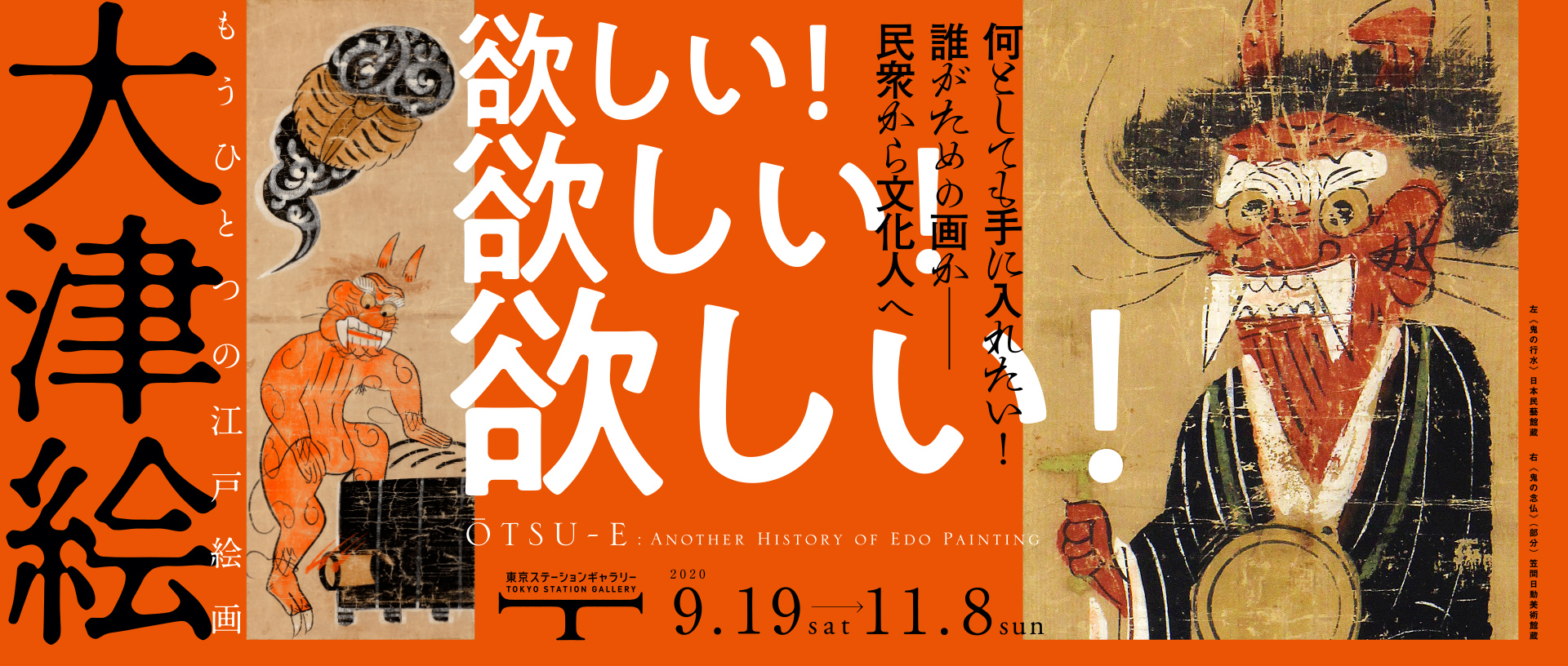
ŌTSU-E: Another History of Edo Painting
Saturday, September 19 - Sunday, November 8, 2020
- Closed
- Mondays (except September 21 and November 2)
- Opening Hours
- 10:00 a.m. to 6:00 p.m.
*Fridays: Until 8:00 p.m.
*Last admission: 30 minutes before closing time
Outline
Up until now, Ōtsu-e exhibitions have mainly been held in museums and reference libraries, but very rarely in an art gallery. This is due to the fact that Ōtsu-e have been regarded primarily as historical documents and folklore materials. This exhibition, however, looks at them as art, and explores their charm as another form of Edo painting, one that does not belong to the Kanō or Rimpa schools, does not spring from the lineage of eccentrics that includes Jakuchū, and is not part of the Ukiyo-e tradition.
Ōtsu-e were inexpensive souvenirs that were mass-produced in the area around the Ōtsu post town on the Tōkaidō highway from the early Edo period onwards. Characterized by their direct and amusing appeal, Ōtsu-e spread throughout Japan, but there are not many still in existence today since they were regarded as cheap ephemera of everyday life.
As Japan modernized, Ōtsu-e lost their function as special souvenirs of the ancient highway but became a source of fascination for many cultural figures. Connoisseurs with an eye for beauty such as the literati painter Tomioka Tessai, the Western-style painter Asai Chū, and Mingei Movement founder Yanagi Sōetsu recognized the value of old Ōtsu-e in particular and collected such paintings. This trend continued after the Pacific War, with Ōtsu-e being collected by people such as the Western-style painter Koito Gentarō and the textile dyer Serizawa Keisuke.
This exhibition is a chance to view around 150 Ōtsu-e masterpieces that are known to have belonged to the collections of such famous connoisseurs from the early modern period.
* Some of the items on display will be changed during the course of the exhibition.
Highlights
1
Kasama Nichido Museum of Art has in its possession the treasured Ōtsu-e collection of the Western-style painter Koito Gentarō, a recipient of the Order of Cultural Merit. This is the first time that the 35 items of that collection are on public display.
2
On display together are the 52 Ōtsu-e masterpieces in the possession of The Japan Folk Crafts Museum, founded by Yanagi Sōetsu, the father of the Mingei Movement and author of Kogei no Michi; 1928 (The Way of Crafts), Japan’s first proper treatise on craft arts.
3
An exhibition made up entirely of Ōtsu-e known to have belonged to the collections of cultural figures from the early modern period, thanks to meticulous investigations and cooperation from the current owners of the paintings. The items on display are on loan from collections all over Japan, and some of them even came here from France.
4
The collectors of these Ōtsu-e masterpieces spared no expense when it came to their mountings. Be sure to look at the hanging scroll mountings so carefully chosen by their former owners.
Information
- Admission Fee
-
Adults : 1,200 yen, high school and university students : 1,000 yen
* Junior high school students and younger: Free
* Advance tickets and group tickets are not available.
* Persons with a disability certificate or similar receive a 100 yen discount, and one accompanying helper is admitted free.
Tickets can be purchased from Lawson Ticket(L-code=37746)
- Organized by
- Tokyo Station Gallery (East Japan Railway Culture Foundation)
- In cooperated with
- Nichido Art Foundation
- Special cooperated with
- The Japan Folk Crafts Museum